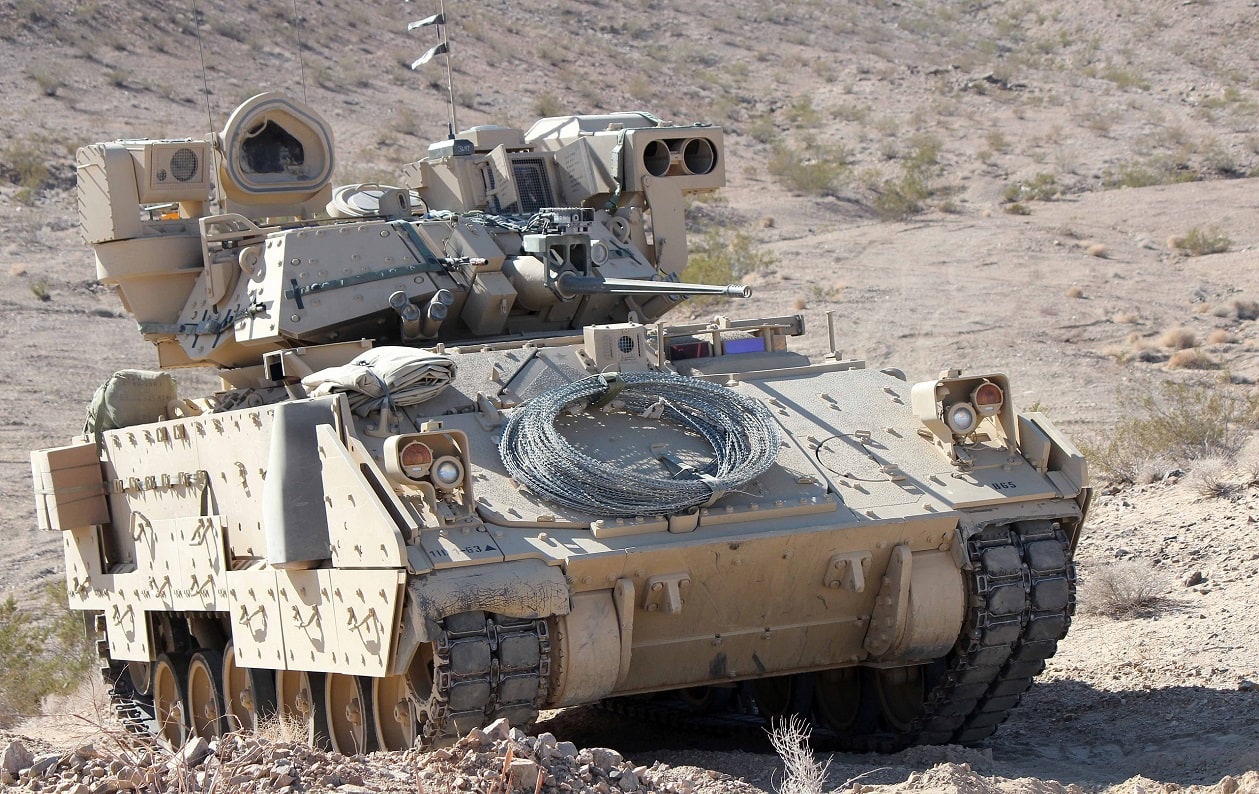US Army Bradley Fighting Vehicle: Now Electric? If you were once U.S. Army mechanized infantry or cavalry, you likely served on the M2/M3 Bradley Fighting Vehicle. It has been a faithful steed over the decades. It looks small compared to the M1A2 Abrams tank, but don’t let that fool you, it has plenty of onboard firepower and can blast TOW antitank missiles. This historic, tracked armored personnel carrier is highly mobile and has improved its armor over the years. Powered by a diesel engine, the army is now investigating whether the Bradley could have a hybrid-electric power plant.
Time to Get Green Bradleys
The U.S. military is a major polluter and releases more carbon dioxide than some countries. The Department of Defense wants to change that, and it aims to reduce carbon emissions by examining whether hybrid electric vehicles can make the switch from diesel to a cleaner engine that is fuel-efficient.
Background on the Infantry Fighting Vehicle
The M2 Bradley has a crew of three and can hold six infantry personnel, while the M3 performs reconnaissance for cavalry and also has a crew of three as it sneaks around with two cavalry scouts to collect intelligence by roaming ahead of the main body.
Lots of Firepower
The main weapon is a M242 25mm Bushmaster chain gun with an effective range of 9,800 feet. There’s also a TOW anti-tank missile launcher, and a 7.62mm M240C machine gun.
What is the Current Engine that Could Get Replaced?
The current Cummings turbo diesel engine with 600 horsepower allows the Bradley to scoot around at speeds up to 35 miles per hour and a range of 300 miles.
The Bradley was introduced in 1981 with over 6,700 vehicles made. It originally had some suspect aluminum protection, but now it sports explosive reactive armor that reduces the damage from shaped charges.
What About the Hybrid Electric Engine?
Now that you know more about the Bradley, let’s take a look at this potential hybrid-electric engine.
The Army’s Rapid Capabilities and Critical Technologies Office have plans for two hybrid prototypes they will test next year. They have sunk $32 million into the program so far.
Questions about the range, power, and battery size of the hybrid.
The first thing that jumps out at you is any potential range issues. This experiment only works if the Bradley can rumble for long distances. Also, the engine needs to be powerful.
Second, the new battery can’t be too big as that would reduce the number of soldiers on board.
Third, it’s not clear how long it will take to charge the battery.
Logistics Improvements Are a Selling Point
One advantage is logistics. The Army believes the hybrid engine will be easier and quicker to work on. Also, this could alleviate a fuel problem the Army endured during the Second Gulf War. Diesel fuel was desperately needed on the front lines. Logisticians had to figure out the best way to transport it with truck convoys. The enemy knew that the trucks would roll through the cities, and they executed plenty of ambushes with RPGs and roadside bombs. Perhaps hybrid vehicles would reduce the need for high levels of transported fuel, cutting down on ambushes.
Hybrid engines, if they have the same capabilities as the diesel power plant, could be an important innovation for the Army. Saving fuel and cutting down emissions are all the rage in the DOD. This transition could also extend the life of the Bradley and keep it running until it is replaced by the new optionally manned fighting vehicle. This program is supposed to yield a prototype in three years, but the Army has been trying to retire the Bradley since 2003 and it is still a mainstay for current combat efforts.
Now serving as 1945’s Defense and National Security Editor, Brent M. Eastwood, Ph.D., is the author of Humans, Machines, and Data: Future Trends in Warfare. He is an Emerging Threats expert and former U.S. Army Infantry officer.

